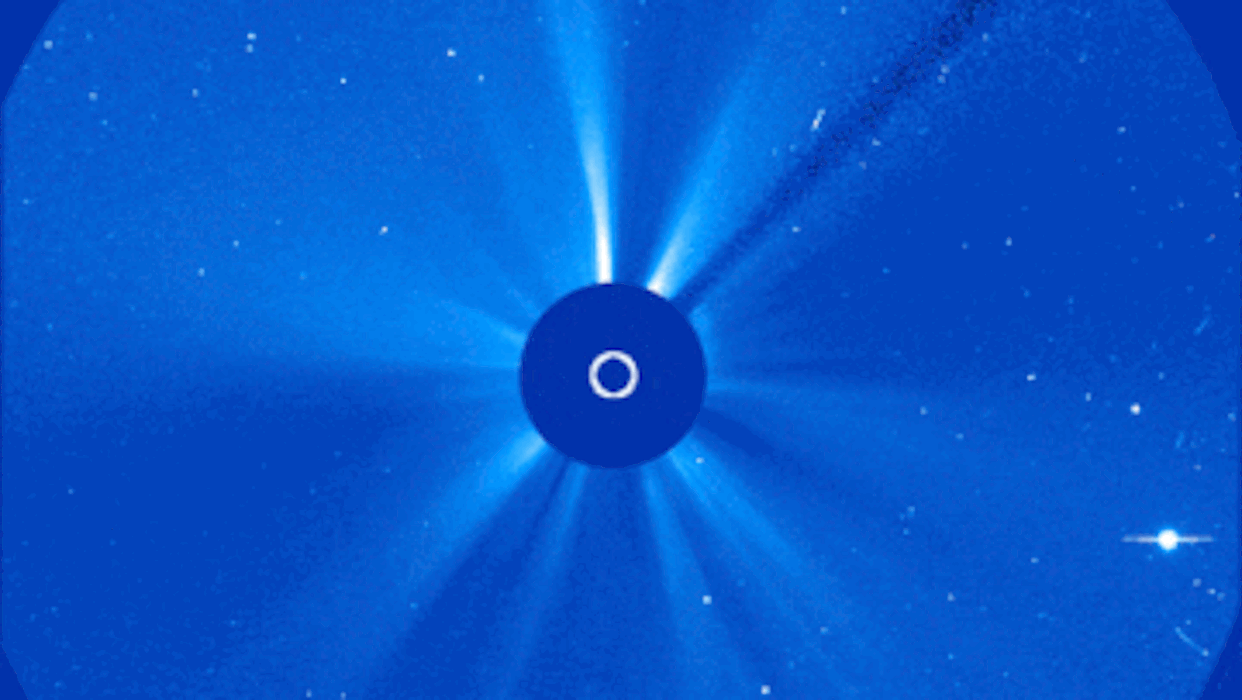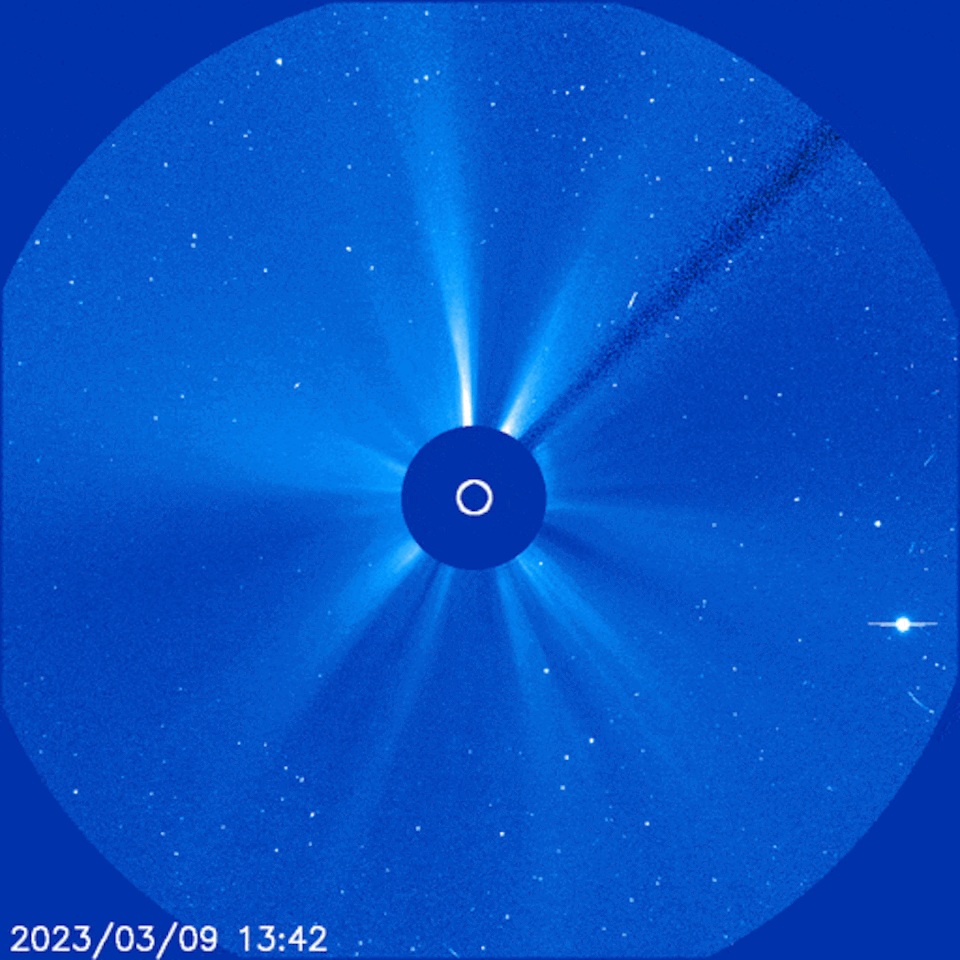Stunning plasma-winged 'butterfly' coronal mass ejection erupts from the sun's far side


A beautiful and ghostly "butterfly" has launched from the sun, unfurling its ethereal, gossamer wings in two expanding arcs of plasma.
Astronomers spotted the unusual solar eruption, known as a coronal mass ejection (CME), exploding from the far side of the sun Friday (March 10), according to Spaceweather.com.
CMEs originate from sunspots, regions on the sun's surface where powerful magnetic fields, created by the flow of electrical charges, form knots before abruptly snapping. The resulting release of energy can eject gigantic plumes of solar material from the sun's surface out into the solar system. Once launched, CMEs travel millions of miles per hour, sweeping up charged particles from the solar wind to form a giant, combined wavefront.
"Most CMEs look like a smoke ring or a halo. This one was different," according to a statement from Spaceweather.com. "We will never know what kind of explosion gave rise to its insectoid shape, because the blast site was on the far side of the sun. The sun itself blocked our view."
Related: Space weather: What is it and how is it predicted?

This particular sun belch is not expected to strike Earth, but it is predicted to barrel into Mercury, according to NASA. Once it hits the closest planet to the sun, the CME could potentially smash through Mercury's weak magnetic field, tearing off some of the planet's surface and dumping it onto its comet-like tail. Other parts of this scoured and uplifted material will be briefly suspended above Mercury, giving the small planet a momentary atmosphere.
Although our planet's much stronger magnetic field can absorb the high-speed barrage of solar debris, CMEs that strike Earth can still cause impressive geomagnetic storms. During these storms, Earth's magnetic field gets compressed slightly by waves of highly energetic particles. These particles trickle down magnetic-field lines near the poles and agitate molecules in the atmosphere, releasing energy in the form of light to create colorful auroras known as the northern lights.
RELATED STORIES:
— Gorgeous auroral glow surprises astrophotographer in California's Death Valley
— Powerful solar storm delays SpaceX rocket launch, stalls oil rigs in Canada amid aurora-palooza
— Sun unleashes massive X2-class solar flare during geomagnetic storm watch (video)
More intense geomagnetic storms can disrupt our planet's magnetic field powerfully enough to send satellites tumbling to Earth, and scientists have warned that extreme geomagnetic storms could even cripple the internet.
The largest solar storm in recent history was the 1859 Carrington Event, which released roughly as much energy as 10 billion 1-megaton atomic bombs. After slamming into Earth, the powerful stream of solar particles fried telegraph systems around the world and caused auroras brighter than the light of the full moon to appear as far south as the Caribbean.
Scientists warn that if a similar event were to happen today, it would cause trillions of dollars' worth of damage, trigger widespread blackouts and endanger thousands of lives. A solar storm in 1989 released a billion-ton gas plume that caused a blackout across Quebec, NASA reported.
Scientists anticipate that the sun's activity will steadily climb for the next few years, reaching an overall maximum in 2025 before decreasing again.
Originally published on LiveScience.com.
Follow us @Spacedotcom, or on Facebook and Instagram.

